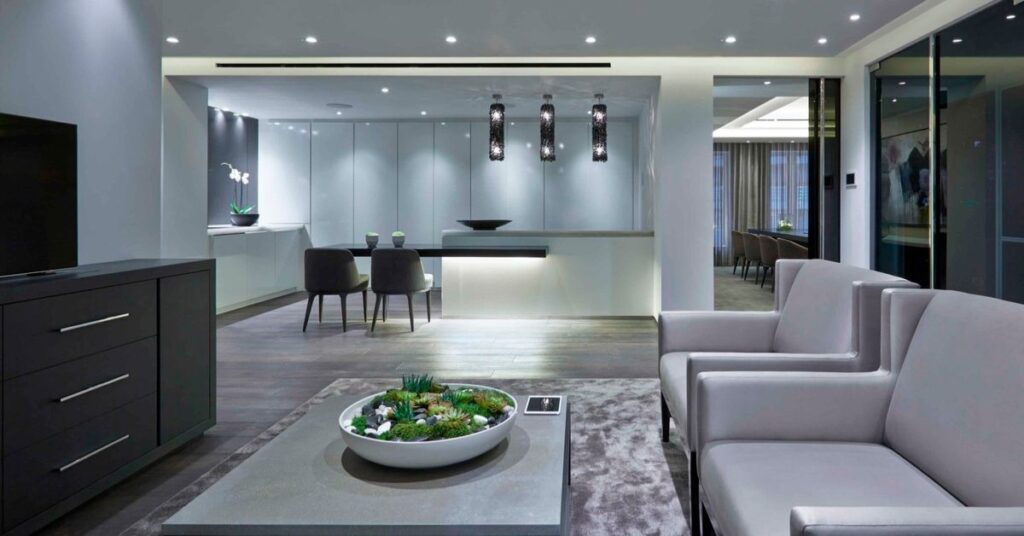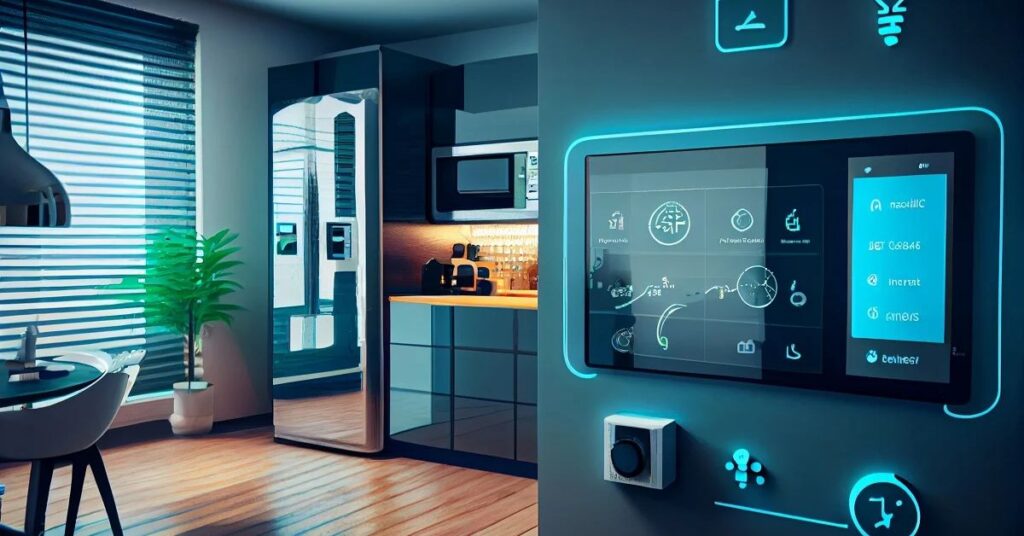We’re living in the age of intelligent environments. The concept of a “smart home” is no longer futuristic—it’s real, evolving, and increasingly accessible. But beyond gadgets and automation, the next phase is about smart design: integrating technology with human behavior, sustainability, and spatial intelligence. This blog explores how smart homes are transforming into smarter homes, where design meets technology in seamless, meaningful ways. The Evolution of Smart Homes Early smart homes were defined by standalone devices—think thermostats, security systems, and lighting controlled by a remote or app. While impressive, these systems often worked in isolation. The shift toward interconnected systems and design integration marks a new chapter. Smart homes today focus on What Makes a Home “Smart”? A smart home is more than just a collection of gadgets—it’s a living environment where technology works seamlessly to improve comfort, efficiency, and safety. What makes a home “smart” is the integration of systems that are connected, automated, and often intelligent enough to learn and adapt to your needs. Core Components of a Smart Home 1. Connectivity The foundation of any smart home is a strong, secure network—usually Wi-Fi or mesh systems—that connects devices to each other and the internet. 2. Automation Smart homes can perform actions automatically based on: For example, lights might turn on when you enter a room or the thermostat adjusts when you leave the house. 3. Remote Access & Control Smart homes can be managed from anywhere using: At its core, a smart home utilizes technology to enhance …
Smart Homes, Smarter Design for Future-Ready Living

We’re living in the age of intelligent environments. The concept of a “smart home” is no longer futuristic—it’s real, evolving, and increasingly accessible. But beyond gadgets and automation, the next phase is about smart design: integrating technology with human behavior, sustainability, and spatial intelligence. This blog explores how smart homes are transforming into smarter homes, where design meets technology in seamless, meaningful ways.
The Evolution of Smart Homes
Early smart homes were defined by standalone devices—think thermostats, security systems, and lighting controlled by a remote or app. While impressive, these systems often worked in isolation. The shift toward interconnected systems and design integration marks a new chapter.
Smart homes today focus on
- Centralized control and AI integration
- Predictive and adaptive environments
- Sustainability and efficiency
- Wellness and user-centric comfort
What Makes a Home “Smart”?
A smart home is more than just a collection of gadgets—it’s a living environment where technology works seamlessly to improve comfort, efficiency, and safety. What makes a home “smart” is the integration of systems that are connected, automated, and often intelligent enough to learn and adapt to your needs.
Core Components of a Smart Home
1. Connectivity
The foundation of any smart home is a strong, secure network—usually Wi-Fi or mesh systems—that connects devices to each other and the internet.
2. Automation
Smart homes can perform actions automatically based on:
- Time (schedules)
- Sensors (motion, temperature, light)
- User behavior (learning routines)
For example, lights might turn on when you enter a room or the thermostat adjusts when you leave the house.
3. Remote Access & Control
Smart homes can be managed from anywhere using:
- Mobile apps
- Voice assistants (e.g., Alexa, Google Assistant, Siri)
- Web dashboards
At its core, a smart home utilizes technology to enhance everyday living through automation, learning, and remote access. Common systems include:
- Smart Lighting: Adjusts brightness, color, and timing based on mood or usage.
- Climate Control: Thermostats that learn your habits and respond to real-time weather.
- Security Systems: Cameras, motion sensors, and doorbells with facial recognition and remote access.
- Voice Assistants: Like Alexa, Siri, or Google Assistant, which serve as control hubs.
- Smart Appliances: From refrigerators that notify you when you’re low on milk to ovens that preheat remotely.
But true intelligence goes beyond automation. It’s about designing systems and spaces that anticipate, respond to, and enhance your life.
Smarter Design: Where Architecture Meets Intelligence

Smart home design is no longer an add-on—it’s a foundational layer of architecture and interior planning. Here’s how smart design is reshaping the home environment:
1. Integrated Infrastructure
Designing a smart home starts with invisible intelligence—wiring, network systems, and sensors that are planned during construction or renovation.
- Structured cabling and mesh Wi-Fi ensure uninterrupted connectivity.
- Smart HVAC zoning integrates with architecture to optimize energy use.
- Hidden control panels or voice-enabled walls allow minimal visual intrusion.
2. Adaptive Spaces
Rooms can now serve multiple functions, adapting to user needs with minimal effort.
- Motorized walls or partitions allow space reconfiguration.
- Smart glass switches between transparency and privacy modes.
- Lighting and acoustics adjust automatically based on time of day or activity.
3. Human-Centric UX
Design is shifting toward intuitive and user-friendly interfaces, prioritizing ease of use for all age groups and abilities.
- Universal design principles ensure accessibility.
- Predictive AI suggests routines, schedules, or adjustments based on behavior patterns.
- Interfaces are becoming voice-based, gesture-based, or ambient—requiring less manual interaction.
Sustainability Through Smart Design
A critical evolution in smart home design is its alignment with eco-conscious living. Technology isn’t just about convenience—it’s about responsibility.
Energy Efficiency
- Smart thermostats reduce consumption by learning user habits.
- Automated blinds respond to sunlight to control indoor temperature.
- Energy dashboards allow homeowners to track and reduce usage in real time.
Water Conservation
- Smart irrigation systems water lawns based on soil moisture and weather forecasts.
- Leak detection systems prevent water damage and waste.
Waste Reduction
- Smart refrigerators track expiration dates and suggest recipes, minimizing food waste.
- AI-driven compost systems help convert waste into usable soil.
Health and Wellness in Smart Homes
Post-pandemic priorities have brought health and wellness into sharp focus—and smart homes are evolving to meet those needs.
- Air quality sensors monitor and improve indoor environments.
- Circadian lighting systems mimic natural light rhythms to promote better sleep and mood.
- Noise-canceling materials and smart acoustic panels enhance mental comfort.
- Touchless fixtures and UV sanitizers elevate hygiene.
In essence, smarter design prioritizes not just how a space works, but how it feels and supports well-being.
Privacy, Security & Ethical Design
With great intelligence comes great responsibility. As homes become more connected, concerns about privacy, data use, and security grow.
Key considerations:
- End-to-end encryption and local data storage protect sensitive user data.
- Customizable permissions ensure users can control who accesses what.
- Designers and manufacturers are now considering ethical AI, where systems are transparent, unbiased, and respectful of privacy.
Smart design must balance functionality with trust—the home is the most personal of spaces, after all.
The Role of AI and Machine Learning
The future of smart homes lies in context-aware systems—homes that don’t just react, but anticipate.
- AI can suggest optimal heating/cooling times.
- Learning algorithms understand when you wake, cook, or relax—and adjust the environment accordingly.
- Voice assistants evolve into “home companions” that learn tone, preferences, even stress levels to adapt supportively.
The house becomes a co-pilot, evolving with its users.
Smart Home Ecosystems: Platforms That Power Everything
Big tech players are converging toward interoperability—systems that play well together across devices and brands.
- Matter, an emerging smart home standard backed by Apple, Amazon, Google, and others, aims to simplify connectivity.
- IFTTT (If This Then That) automation connects multiple apps and devices for custom workflows.
With open ecosystems, smart homes become modular, flexible, and future-proof.
What’s Next: The Future of Smart Living
Looking ahead, smart homes are moving from luxury to necessity—especially in urban environments where efficiency, sustainability, and adaptability are key.
Emerging trends:
- Neuro-responsive environments: lighting and music that respond to mood.
- Digital twins of homes: virtual replicas for maintenance and simulation.
- Smart neighborhoods: where homes interact with city infrastructure and share energy or data.
The home of the future won’t just be smart—it will be empathetic, regenerative, and deeply integrated with human and planetary rhythms.
Conclusion: Designing for the Intelligent Life
“Smart Homes, Smarter Design” isn’t just about voice commands or app-controlled lights—it’s about a holistic shift in how we think about living spaces. It’s where technology meets intention, design meets behavior, and the home becomes a dynamic, supportive partner in everyday life.
As our homes get smarter, let’s ensure our design thinking gets wiser—so we’re not just adding features, but enhancing lives.


